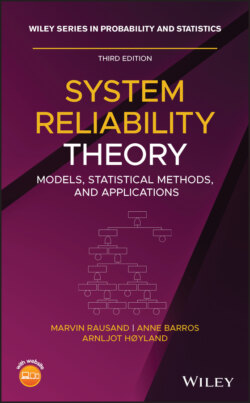Читать книгу System Reliability Theory - Marvin Rausand - Страница 109
Example 2.2 (Pipeline with safety valves)
ОглавлениеConsider a pipeline with two independent safety valves and that are physically installed in series, as shown in Figure 2.17a. The valves are supplied with a spring loaded fail‐safe‐close hydraulic actuator. The valves are opened and held open by hydraulic pressure and is closed automatically by spring force whenever the hydraulic pressure is removed or lost. In normal operation, both valves are held open. The essential function of the valve system is to act as a safety barrier, that is, to close and “stop flow” in the pipeline in case of an emergency.
Figure 2.17 Two safety valves in a pipeline: (a) physical layout, (b) RBD for the safety barrier function, and (c) RBD for spurious closure.
The two blocks in Figure 2.17b represent the valve function “stop flow” for valve 1 and 2, respectively. This means that each valve is able to close and stop the flow in the pipeline. To achieve the system function “stop flow,” it is sufficient that at least one of the individual valves can “stop flow.” The associated RBD is therefore a parallel structure with respect to the system function “stop flow.”
The valves may close spuriously, that is, without a control signal, and stop the flow in the pipeline. The two blocks in Figure 2.17c represent the valve function “maintain flow” in the pipeline, for valves 1 and 2, respectively. Because the flow in the pipeline stops when one of the valves closes, the system function “maintain flow” is fulfilled only when both valves function with respect to the valve function “maintain flow”. The associated RBD is therefore a series structure for the system function “maintain flow.”
Example 2.2 shows that two different functions of a single system give rise to two different RBD. Observe also that the blocks in the two RBDs represent different component functions in (b) and (c).
